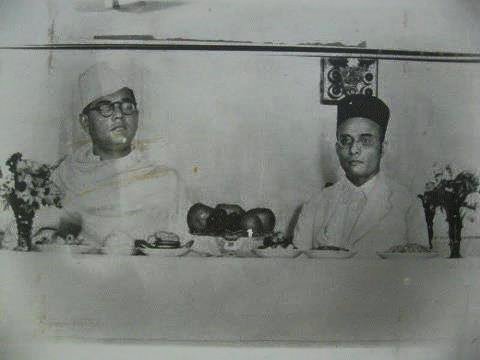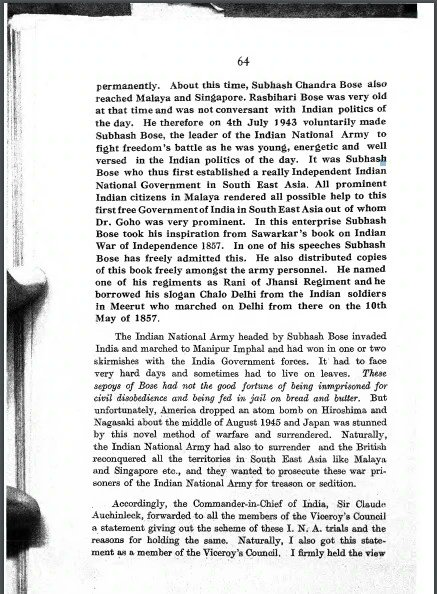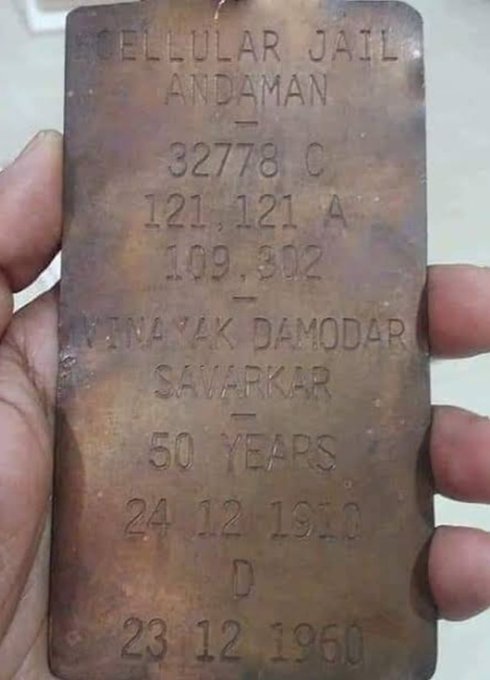Vinayak Damodar Savarkar, popularly known as Veer Savarkar, was one of the most dynamic and controversial figures of the Indian freedom struggle. A fiery patriot, a pioneering reformer, and the ideological father of Hindutva, Savarkar’s legacy continues to influence India’s political and cultural landscape. Born in an era of colonial subjugation, Savarkar envisioned an independent and strong Bharat rooted in self-respect, unity, and ancient civilizational pride.
Early Life and Awakening of Patriotism
Born on May 28, 1883, in Bhagur, a small town in present-day Maharashtra, Savarkar grew up during the height of British colonial rule. Orphaned at a young age, he was deeply inspired by tales of valor from Indian history. He founded a revolutionary organization named Mitra Mela during his school days, which later evolved into Abhinav Bharat, aimed at overthrowing British rule through armed struggle.
The London Years and Revolutionary Writings
Savarkar traveled to London in 1906 to study law, but his mission extended far beyond academics. There, he penned "The First War of Indian Independence – 1857", a path-breaking work that countered British narratives by portraying the 1857 uprising as a nationalist revolution rather than a mere sepoy mutiny. The book was banned by the British but circulated secretly, inspiring freedom fighters across generations.
“Subhas Bose took his inspiration from Savarkar’s book on the Indian War of Independence of 1857. In one of his speeches, Subhas Bose has freely admitted this. He also distributed copies of this book freely amongst all the army personnel. He named one of his regiments as Rani of Jhansi Regiment and he borrowed the slogan Chalo Delhi from the Indian soldiers in Meerut who marched to Delhi from there on the 10th May of 1857.”
Savarkar also associated with Indian revolutionaries in London and abroad, encouraging organized resistance. It was during this time that he became one of the earliest Indians to openly call for complete independence from British rule—decades before the idea was mainstream.
Arrest and the Cellular Jail Ordeal
In 1909, Savarkar was implicated in a conspiracy related to the assassination of a British official and was arrested. He was sentenced to two life terms (50 years) and transported to the Cellular Jail in the Andaman Islands, where he endured inhumane torture and solitary confinement. Despite the brutal conditions, Savarkar remained mentally resilient and composed thousands of verses in Marathi, scratching them onto the walls of his cell.
Post-Release: The Ideologue of Hindutva
After years of incarceration, Savarkar was released under strict conditions in 1921-22 from Cellular Jail in the Andaman Islands (Kala Pani), Vinayak Damodar Savarkar was moved to Ratnagiri in 1921 and was interned there until 1937. He was released from internment in Ratnagiri in 1937. After his release, Savarkar joined the Hindu Mahasabha.
While he distanced himself from revolutionary activities, he remained deeply engaged in political and social thought. In 1923, he had already authored the ground work "Hindutva: Who is a Hindu?", defining Hindutva as a cultural and national identity rooted in Bharat’s civilizational values, rather than merely a religious label. This ideology aimed to unify Hindus across caste and sectarian lines under a common national consciousness.
Social Reform and Rationalism
A little-known but critical part of Savarkar’s legacy lies in his social reform work. He strongly opposed the caste system, untouchability, and orthodox rituals. He encouraged temple entry for all Hindus, inter-caste dining, and worked tirelessly to modernize Hindu society. A rationalist at heart, Savarkar promoted scientific thinking, industrialization, and military preparedness as essential for national regeneration.
Role in Politics and the Freedom Struggle
Savarkar became the president of the Hindu Mahasabha in 1937 and led it through a tumultuous period. He remained critical of the Indian National Congress for its appeasement policies and failure to assert Hindu interests, particularly during the partition debates. His vision of "Akhand Bharat"—an undivided India stretching from the Himalayas to the Indian Ocean—stood in stark contrast to the concessions that eventually led to India’s partition.
Controversies and Legacy
Savarkar remains a controversial figure in Indian history. While some criticize him for his alleged clemency petitions during imprisonment and his name being linked (though unproven) to the Gandhi assassination allegation, others argue that these allegations overshadow his vast contributions to the national cause.
Today, Savarkar is increasingly recognized as a visionary thinker, strategist, and patriot whose ideas on nationalism, security, and cultural pride resonate strongly in contemporary India.
Conclusion
Vinayak Damodar Savarkar was not just a freedom fighter—he was a civilizational reformer, a bold thinker, and a catalyst of modern Hindu political consciousness. His writings, sacrifices, and vision laid the intellectual foundation for an assertive India that seeks pride in its ancient past while striving for a modern, just, and strong future. Love him or criticize him, Savarkar’s place in Indian history is undeniable—and his ideas continue to shape the nation's ideological discourse.



